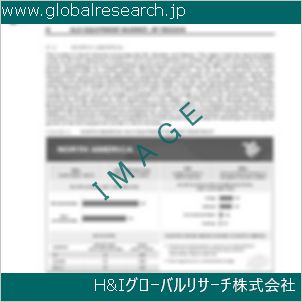Table of Contents
1 Industry Overview of Nitricacid
1.1 Definition and Specifications of Nitricacid
1.1.1 Definition of Nitricacid
1.1.2 Specifications of Nitricacid
1.2 Classification of Nitricacid
1.3 Applications of Nitricacid
1.3.1 Nuclear Application
1.3.2 Non-Nuclear Application
1.4 Industry Chain Structure of Nitricacid
1.5 Industry Overview and Major Regions Status of Nitricacid
1.5.1 Industry Overview of Nitricacid
1.5.2 Global Major Regions Status of Nitricacid
1.6 Industry Policy Analysis of Nitricacid
1.7 Industry News Analysis of Nitricacid
2 Manufacturing Cost Structure Analysis of Nitricacid
2.1 Raw Material Suppliers and Price Analysis of Nitricacid
2.2 Equipment Suppliers and Price Analysis of Nitricacid
2.3 Labor Cost Analysis of Nitricacid
2.4 Other Costs Analysis of Nitricacid
2.5 Manufacturing Cost Structure Analysis of Nitricacid
2.6 Manufacturing Process Analysis of Nitricacid
3 Technical Data and Manufacturing Plants Analysis of Nitricacid
3.1 Capacity and Commercial Production Date of Global Nitricacid Major Manufacturers in 2023
3.2 Manufacturing Plants Distribution of Global Nitricacid Major Manufacturers in 2023
3.3 R&D Status and Technology Source of Global Nitricacid Major Manufacturers in 2023
3.4 Raw Materials Sources Analysis of Global Nitricacid Major Manufacturers in 2023
4 Capacity, Production and Revenue Analysis of Nitricacid by Regions, Types and Manufacturers
4.1 Global Capacity, Production and Revenue of Nitricacid by Regions 2019-2024
4.2 Global and Major Regions Capacity, Production, Revenue and Growth Rate of Nitricacid 2019-2024
4.3 Global Capacity, Production and Revenue of Nitricacid by Types 2019-2024
4.4 Global Capacity, Production and Revenue of Nitricacid by Manufacturers 2019-2024
5 Price, Cost, Gross and Gross Margin Analysis of Nitricacid by Regions, Types and Manufacturers
5.1 Price, Cost, Gross and Gross Margin Analysis of Nitricacid by Regions 2019-2024
5.2 Price, Cost, Gross and Gross Margin Analysis of Nitricacid by Types 2019-2024
5.3 Price, Cost, Gross and Gross Margin Analysis of Nitricacid by Manufacturers 2019-2024
6 Consumption Volume, Consumption Value and Sale Price Analysis of Nitricacid by Regions, Types and Applications
6.1 Global Consumption Volume and Consumption Value of Nitricacid by Regions 2019-2024
6.2 Global and Major Regions Consumption Volume, Consumption Value and Growth Rate of Nitricacid 2019-2024
6.3 Global Consumption Volume and Consumption Value of Nitricacid by Types 2019-2024
6.4 Global Consumption Volume and Consumption Value of Nitricacid by Applications 2019-2024
6.5 Sale Price of Nitricacid by Regions 2019-2024
6.6 Sale Price of Nitricacid by Types 2019-2024
6.7 Sale Price of Nitricacid by Applications 2019-2024
6.8 Market Share Analysis of Nitricacid by Different Sale Price Levels
7 Supply, Import, Export and Consumption Analysis of Nitricacid
7.1 Supply, Consumption and Gap of Nitricacid 2019-2024
7.2 Global Capacity, Production, Price, Cost, Revenue, Supply, Import, Export and Consumption of Nitricacid 2019-2024
7.3 USA Capacity, Production, Price, Cost, Revenue, Supply, Import, Export and Consumption of Nitricacid 2019-2024
7.4 EU Capacity, Production, Price, Cost, Revenue, Supply, Import, Export and Consumption of Nitricacid 2019-2024
7.5 China Capacity, Production, Price, Cost, Revenue, Supply, Import, Export and Consumption of Nitricacid 2019-2024
7.6 Japan Capacity, Production, Price, Cost, Revenue, Supply, Import, Export and Consumption of Nitricacid 2019-2024
8 Major Manufacturers Analysis of Nitricacid
8.1 Manufacturer One
8.1.1 Company Profile
8.1.2 Product Picture and Specifications
8.1.2.1 Type I
8.1.2.2 Type II
8.1.2.3 Type III
8.1.3 Capacity, Production, Price, Cost, Gross and Revenue
8.1.4 Contact Information
8.2 Manufacturer Two
8.2.1 Company Profile
8.2.2 Product Picture and Specifications
8.2.2.1 Type I
8.2.2.2 Type II
8.2.2.3 Type III
8.2.3 Capacity, Production, Price, Cost, Gross and Revenue
8.2.4 Contact Information
8.3 Manufacturer Three
8.3.1 Company Profile
8.3.2 Product Picture and Specifications
8.3.2.1 Type I
8.3.2.2 Type II
8.3.2.3 Type III
8.3.3 Capacity, Production, Price, Cost, Gross and Revenue
8.3.4 Contact Information
8.4 Manufacturer Four
8.4.1 Company Profile
8.4.2 Product Picture and Specifications
8.4.2.1 Type I
8.4.2.2 Type II
8.4.2.3 Type III
8.4.3 Capacity, Production, Price, Cost, Gross and Revenue
8.4.4 Contact Information
8.5 Manufacturer Five
8.5.1 Company Profile
8.5.2 Product Picture and Specifications
8.5.2.1 Type I
8.5.2.2 Type II
8.5.2.3 Type III
8.5.3 Capacity, Production, Price, Cost, Gross and Revenue
8.5.4 Contact Information
…
9 Marketing Trader or Distributor Analysis of Nitricacid
9.1 Marketing Channels Status of Nitricacid
9.2 Traders or Distributors with Contact Information of Nitricacid by Regions
9.3 Ex-work Price, Channel Price and End Buyer Price Analysis of Nitricacid
9.4 Regional Import, Export and Trade Analysis of Nitricacid
10 Industry Chain Analysis of Nitricacid
10.1 Upstream Major Raw Materials Suppliers Analysis of Nitricacid
10.1.1 Major Raw Materials Suppliers with Contact Information Analysis of Nitricacid
10.1.2 Major Raw Materials Suppliers with Supply Volume Analysis of Nitricacid by Regions
10.2 Upstream Major Equipment Suppliers Analysis of Nitricacid
10.2.1 Major Equipment Suppliers with Contact Information Analysis of Nitricacid
10.2.2 Major Equipment Suppliers with Product Pictures Analysis of Nitricacid by Regions
10.3 Downstream Major Consumers Analysis of Nitricacid
10.3.1 Major Consumers with Contact Information Analysis of Nitricacid
10.3.2 Major Consumers with Consumption Volume Analysis of Nitricacid by Regions
10.4 Supply Chain Relationship Analysis of Nitricacid
11 Development Trend of Analysis of Nitricacid
11.1 Capacity, Production and Revenue Forecast of Nitricacid by Regions and Types
11.1.1 Global Capacity, Production and Revenue of Nitricacid by Regions 2024-2029
11.1.2 Global and Major Regions Capacity, Production, Revenue and Growth Rate of Nitricacid 2024-2029
11.1.3 Global Capacity, Production and Revenue of Nitricacid by Types 2024-2029
11.2 Consumption Volume and Consumption Value Forecast of Nitricacid by Regions, Types and Applications
11.2.1 Global Consumption Volume and Consumption Value of Nitricacid by Regions 2024-2029
11.2.2 Global and Major Regions Consumption Volume, Consumption Value and Growth Rate of Nitricacid 2024-2029
11.2.3 Global Consumption Volume and Consumption Value of Nitricacid by Types 2024-2029
11.2.4 Global Consumption Volume and Consumption Value of Nitricacid by Applications 2024-2029
11.3 Supply, Import, Export and Consumption Forecast of Nitricacid
11.3.1 Supply, Consumption and Gap of Nitricacid 2024-2029
11.3.2 Global Capacity, Production, Price, Cost, Revenue, Supply, Import, Export and Consumption of Nitricacid 2024-2029
11.3.3 USA Capacity, Production, Price, Cost, Revenue, Supply, Import, Export and Consumption of Nitricacid 2024-2029
11.3.4 EU Capacity, Production, Price, Cost, Revenue, Supply, Import, Export and Consumption of Nitricacid 2024-2029
11.3.5 China Capacity, Production, Price, Cost, Revenue, Supply, Import, Export and Consumption of Nitricacid 2024-2029
11.3.6 Japan Capacity, Production, Price, Cost, Revenue, Supply, Import, Export and Consumption of Nitricacid 2024-2029
12 New Project Investment Feasibility Analysis of Nitricacid
12.1 New Project SWOT Analysis of Nitricacid
12.2 New Project Investment Feasibility Analysis of Nitricacid
13 Conclusion of the Global Nitricacid (CAS 7697-37-2) Industry 2024 Market Research Report
| ※参考情報 硝酸(Nitric acid、CAS番号 7697-37-2)は、化学式 HNO₃ で表される酸性の化合物であり、無色の液体として存在します。これは、水に溶解しやすく、強い酸性を示す特性を持っています。硝酸は、さまざまな産業や化学反応において極めて重要な役割を果たす化学物質です。 硝酸の定義及び特徴として、まずその強酸性が挙げられます。pKa値は約-1.4であり、この数値からも酸の強さが理解できるでしょう。また、硝酸は強い酸化剤としても知られています。これにより、金属や他の化合物と反応する際に、電子を奪うことができ、その過程で酸化反応を引き起こします。この酸化作用は、有機化合物の合成や金属の腐食実験などに広く用いられています。 その性質として、硝酸は高い腐食性を持つため、取扱いや保管には注意が必要です。皮膚や粘膜への接触は危険であり、吸引も健康に悪影響を及ぼす恐れがあります。このため、硝酸を扱う際には適切な防護具を着用し、換気の良い場所で作業を行うことが推奨されています。 硝酸にはいくつかの種類があります。主に濃硝酸(約68%)と希硝酸(1%~30%)に分けられます。濃硝酸は、主に工業用途に用いられ、厳密な化学反応や製造プロセスにおいて重要な役割を果たします。一方、希硝酸は主に教育機関での実験や、特定の化学反応の中間体として利用されます。さらに、硝酸は温度によっていくつかの異なる形態をとることもあり、例えば、冷却された硝酸は複数の水素結合を形成し、異なる物理的性質を示すことがあります。 硝酸の用途は多岐にわたります。最も広く知られている用途は、肥料の生産です。硝酸は、大規模な農業において重要な成分であるアンモニウム硝酸(NH₄NO₃)や尿素などの肥料の製造に欠かせない原料です。また、硝酸は、爆薬の製造にも使われており、特にダイナマイトやトリニトロトルエン(TNT)などの高性能な爆薬の原料として重要です。さらに、硝酸は金属のエッチングや洗浄にも用いられ、例えば、銅や銅合金の加工において、酸化皮膜を除去するために使われます。 科学研究の分野においても、硝酸は重要な化学反応の試薬として利用されています。有機合成や無機化学において、硝酸は酸化剤やグリニャール試薬の生成など、様々な化学的操作を進める役割を果たします。さらに、環境分析においても、硝酸は水中の重金属の定量分析に用いられ、環境調査や公衆衛生の維持に寄与しています。 関連技術としては、硝酸の製造プロセスが挙げられます。最も一般的な方法は、アモニアと酸素を反応させて硝酸を合成することによるもので、これは「オストワルトプロセス」として知られています。このプロセスでは、まずアモニアが酸化され、ニトロソガスが生成された後、これを水と反応させることで硝酸が得られます。この方法は効率的であり、大量生産が可能です。 さらに、硝酸はその性質から環境問題とも関連があります。特に、硝酸が大気中に放出される場合、酸性雨の原因となることがあります。したがって、硝酸の製造や利用に際しては、環境への影響を考慮した適切な管理が求められています。最近では、環境への影響を低減するための新しい技術やプロセスの開発が進められています。 このように、硝酸はその強い酸性や酸化性、広範な用途を背景に、化学産業において欠かせない重要な化学物質です。化学反応や製造プロセスにおけるその役割は大きく、今後ますますその利用が広がっていくことが予想されます。しかし、一方でその取り扱いには慎重さが求められ、常に安全対策を講じる必要があります。 |
❖ 免責事項 ❖
http://www.globalresearch.jp/disclaimer












